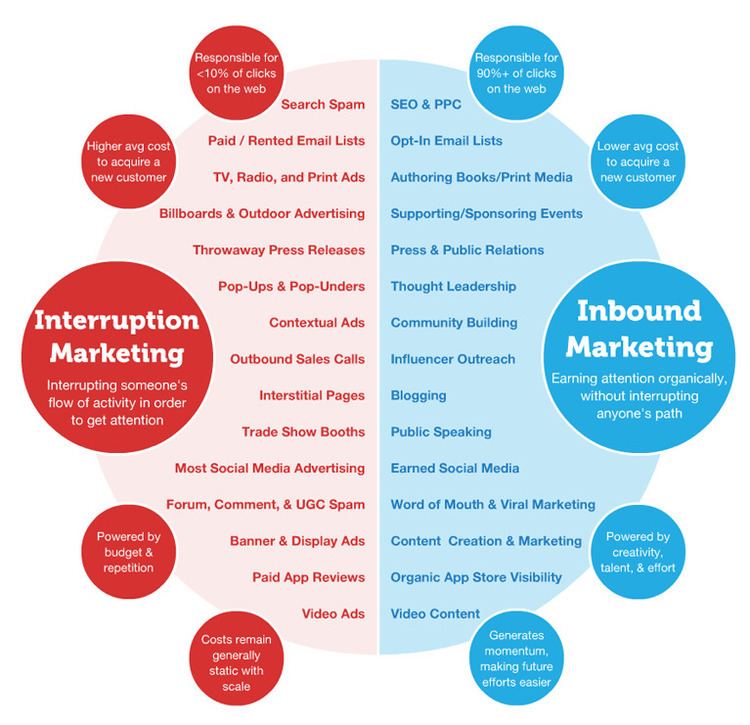 | ||
Inbound marketing in plain english
Inbound marketing is a technique for drawing customers to products and services via content marketing, social media marketing and search engine optimization.
Contents
- Inbound marketing in plain english
- Description
- The rise of inbound marketing
- The cycle of inbound marketing
- The inbound method
- Blogs
- SEO Search Engine Optimization
- SEM Search Engine Marketing
- Social media
- Inbound process
- The concept of consumption in inbound marketing
- Inbound marketing pushing factors
- The consumer choice and the inbound marketing perspective
- References
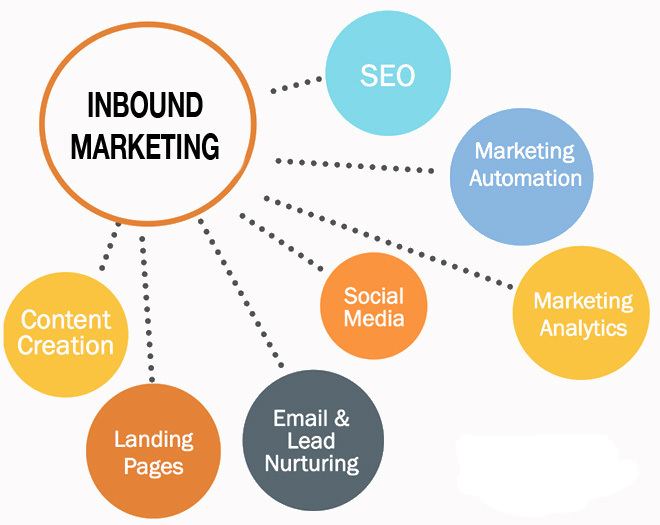
Description
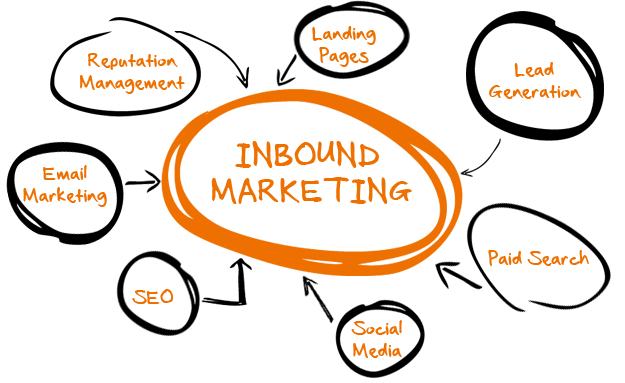
Inbound marketing provides information, an improved customer experience and builds trust by offering potential customers information they value via company sponsored newsletters, blogs and entries on social media platforms.
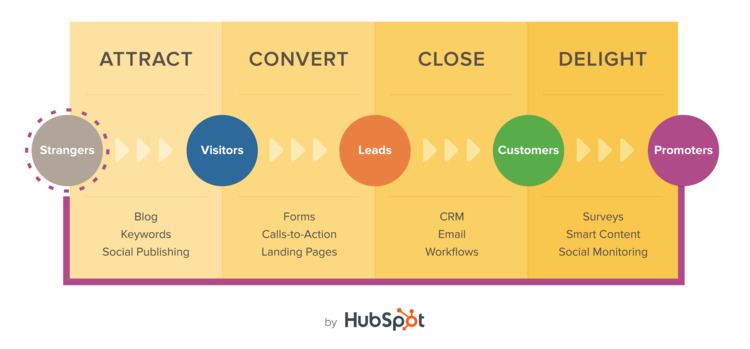
Marketing strategist David Meerman Scott says that inbound marketing allows marketers to "earn their way" into a customers awareness rather than invading their awareness through paid advertisements.
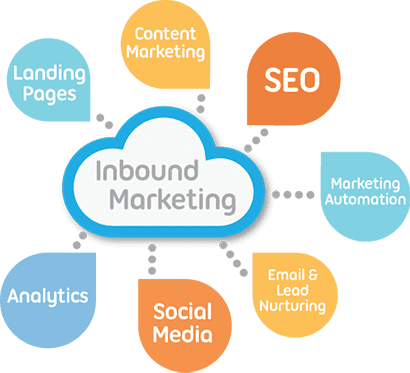
The term "inbound marketing" was coined by HubSpot CEO, Brian Halligan and is synonymous with the concept of Permission Marketing a 1999 book by Seth Godin.
Compared with outbound marketing, inbound reverses the relationship between company and customer. In fact, while outbound marketing is going to push the product through various channels, inbound marketing creates awareness, attracts and helps new customers with channels like blogs, social media, direct mails etc.
The rise of inbound marketing
With the raise of new technologies helped by the spreading of internet Inbound marketing became the most effective way to attract new customers. Since 2006 many companies understood that to be successful, contents must be connected with customers’ interests. More and more creative and helpful contents are going to be spread, letting the public interest being aligned with useful contents.
The cycle of inbound marketing
Get found
Get found is the first step to start an Inbound cycle. With the phrase “get found’’ we mean that your content must be visible to the right audience at the right time. This is a very long process that implies a long research and planning of contents.
Convert
The second step regards conversions of fans into prospects. It may seem a very easy process but it is not easy at all. This process is long and implies energies and time for the company.
Analyze
The third and final step of inbound cycle is analyze. After letting the customer be aware of our product/service, and after converting our fan into prospect/lead we have to know if we have worked well. Then analyzing datas is very important to understand what we have to change in the process to improve our results.
The inbound method
To work well, Inbound marketing needs many tools that in one hand help the brand to be found, in the other hand help the customer to learn useful things spread by the brand. Some of the tools we are referring to are: Blogs, SEO/SEM, Social media etc.
Blogs
Blogging became very popular at the beginning of XXI century and it is a very useful way for the brand to create awareness and to attract new customers. Inbound Marketers use blogs not just to attract new customers but also to convert brand fans into prospects or leads! The first question that a blog must answer to is: why I’m existing? am I useful to someone? Creating unique and educational content blogs will be a great way for marketers to be successful.
SEO ( Search Engine Optimization)
SEO is a way to boost the visibility of a website or a webpage. Improve the number of contacts who visit a page is a way to improve profits because web visitors can become customers. It is an Internet marketing strategy which considers how search engines work and what people search for, looking for keywords for their research. This marketing tool can be used in different ways:
Getting indexed
Leading search engines use crawlers to find pages for their algorithmic search results. SEO is a fundamental tool in order to increase the number of backlinks or inbound links. It is not an appropriate strategy for every website, obviously there are also other factors that are important to achieve success. Surely it makes a right ROI (return of investment). Pages that are linked from other search engine indexed pages do not need to be submitted because they are found automatically. It is important to know that search engine crawlers may look at a huge number of factors when they are crawling a site.
Increasing visibility
There are a different ways to do it, cross-links between pages of the same website is one of the most used because it makes the user have the impression of “moving” into the Internet without going out the webpage. Preventing crawling Is used in order to prevent undesiderable content in the search indexes. SEO is not an appropriate strategy for every websites, other marketing strategies can be more effective, but is a factor to consider in order to boost visibility and how to get it.
SEM ( Search Engine Marketing)
SEM is a form of web marketing which involves the promotion of websites by increasing their visibility in search engine results pages, principally through paid advertising. SEM is strictly connected to SEO in regards to pay promotion and get found out in the first search page. There are some methods and metrics to optimize websites: Keyword research and analysis which ensure the site can be indexed in search engine, finding the more frequently typed words; Presence which means how many times a web page is indexed by search engines and how many backlinks does it get; Back end tools such as Web analytic tools and HTML validators; Whois tools that reveal the owners of various websites and can provide information related to copyright and trademark. SEM objective is to boost the visibility of a page, it can be done using the so-called “sponsorization”. With the term “sponsorization” is intended a search engine company charging fees for the inclusion of a website in their results pages.
Social media
Social media are spread all over the world and are a very huge opportunity for inbound marketing. They connect billions of people, who every day share different types of contents such as images, video, text and so on. But social media (link social media) are not just a way to have some fun on the internet, they are a way for marketers to let information be reached from the right audience! With the right and unique contents social publishing allows brands to engage new prospects converting them into customers.
Inbound process
Inbound to work well needs a very precise process that, if respected, provide to marketers a very huge competitive advantage compared with outbound marketing. The process is composed by four main steps: Attract, Convert, Close and Delight. These are not random steps but have to be used in sequence in order to obtain more visitors on sites, to speed up conversions and finally increase the number of leads and prospects.
Attract
One of the most important difference between outbound and inbound marketing is the fact that ‘’if classical marketing is betting on those people, inbound is betting on that person!’’. it means that companies using inbound marketing know perfectly which are the people they are talking with. They can do it through the buyer personas. The buyer personas are the identikit of our ideal customers. Only through them we can know which is our ideal target and which channels we have to use to reach it. With the term ‘’attract’’ we don’t mean that we want to attract random people. Indeed we want to attract the right people at the right time with the right contents. Building our company on the buyer personas we can define which are the beliefs, pains, hobbies etc. of our customer and on their basis we can create the right contents to attract visitor on our Blog, social, Youtube channel etc.
Convert
After attracting the visitor on our, let’s say for example, website, we are ready to convert him/her into prospect gathering his/her contact information. XXI century media user is obsessed with contact forms, spam emails and so on but emails are the most valuable information for an inbound marketer. But how can the inbound marketer collect easily visitor’s email address? Obviously giving him something in return. As we say, we don’t want a random visitor, we want the right one. Then if we give a tutorial video, an ebook or something valuable for our customer he/she will be so glad to give us his/her e-mail in return.
Close
Now that we have the needed information we can stay in contact with our prospects. But now how to transform our prospects into customers? Some helpful tools are:
Email integrated with call-to-action
Call-to-actions are very useful to let customer complete an action that we like. With this powerful tool we can generate a positive cycle that generates value both for our customer and for us. Generating useful contents and sending it periodically to our prospect we can create awareness but also build trust and make our ‘’close-customer’’ be ready to buy something.
CRM
Customer Relation Management systems are one of the most useful way to keep track of the various steps of our customer acquisition.Taking track of information regarding customer, partner companies etc. it is possible to deliver the right message at the right time to the right person.
Smarketing reporting
Smarketing is the mix of Sales and Marketing. Generally in big companies they are two separated units but in inbound marketing they are usually mixed to have complete and fully understandable informations between the two areas. With close-loop reports also sales and marketing departments know which is the right time to close a deal with the customer and above all know if the customer is ready to be acquired
Nurturing automation
Through the process of nurturing consists we make the customer ready to be acquired.
For example, if visiting a certain site the visitor fills a form to download an ebook, we know that our prospect is interested to the subject treated in the ebook. Collecting this information we are ready to ‘’nurture’’ our future probable customer with a series of email, videos etc. connected with the subject he/she is interested to.
Delight
After attracting our fan, converting him into prospect, letting him buy something from, we have to keep in touch with our customer, continuing providing good and valuable contents to him with the hope to do some upselling.
The concept of consumption in inbound marketing
Inbound marketing surely takes in account two main aspects of the 21st century’s consumption: the selectivity and the increasing media consumption. If at the beginning of the 20th century the terms consumption started to be associated with “pleasure, enjoyment and freedom” so that consumption became “an end in its own right”, during the end of 21st century’s first decade, as the consumption pattern is increasing in rapidity, overwhelming consumers, these are learning how to isolate themselves from all the advertising noise, in practice tuning out traditional marketing methods and selecting the right moments and places to connect with brands. Consumption in this era has become selective. Indeed, through research online, consumers are starting to make more and more informed decisions. For this reason, standing out from the contemporary advertising Pangea and building brand loyalty has become more challenging and getting in touch with consumers in a relevant way is essential. The analysis of how consumers use media is crucial in relation to inbound marketing. Users are surfing Internet via multiple devices more than ever preferring mobile ones to the traditional computer or laptop. In addition the increasingly fast daily routine requires from the part of consumers to surf on internet while doing a number of other things. This leads to shorter attention spans, more stimulus, more interactions, and in turns more content competition for businesses. Not only work or school-related pieces of information are sought online but consumers become internet surfers also, or even mainly, for entertainment purposes. This leads to the trend of offering useful and amusing information on companies’ websites or social media accounts.
Inbound marketing pushing factors
In a relatively little timespan postmodern society (mainly the western society) has become an “information technology constituted environment” where in turns production and consumption have become more difficult distinguishable. Approaching the 2020 the production of content is no longer exclusive competence of media or companies. A user-produced or at least leaded content scenario is more realistic. It is an environment where the user is no longer a consumer but a contributor, an environment characterized by forms of citizen journalism and content creation led by the user. This involves that the content creation or construction in the WWW knowledge-intensive environment is a participatory mode both productive and consumptive and the involved parts are both users and producers of knowledge at the same time. These means for sure more competition between contents. It is in this respect that the identification of online influencers and establishing with them a relationship is one key point of inbound marketing to make the best of the digital world and deploy better its opportunities. The participation of consumers in the creation of media content is not the only pushing factor. The inclination of consumers to look forward for increasingly more information can be recognized as another lever for inbound marketing. Consumers are hungry for knowledge and are willing to look for them through all the possible way. This is due mostly to the fact that consumers in the 2010s are quite caution and pay more attention to their purchase. Moreover, a feeling of mistrust in advertising is common among today’s consumers making them searching for information by themselves. Inbound marketing has caught this new trend and puts lots of emphasis in the effort of making information available on the market.
The consumer choice and the inbound marketing perspective
In the late 19th century and through the 20th century the productivity capacity visibly grew, accompanied by an increase in intensity of consumption. It was in this moment that the consumer started to be considered as able to make decisions and exercise choice to achieve his / her own interest on the market. In a “society of individualized consumers”, consumer choice was associated with freedom. But it must be also pointed out that consumers exercise their decisional power on the market subject to a variety of influences, such as, among other things, marketing strategies. The range of things in respect of which consumer choice is exercised are largely prearranged and the consumers’ resources to make a free and informed choice are, for lots of them, significant limited in financial and time terms. This is a fundamental assumption of inbound marketing, which values most of all the fact to enable companies and company-related information to be easily found by consumers. The development and deployment of information technology has enabled consumers to exercise a certain degree of influence. In this context consumer becomes more involved in determining the specification of products on the market. However, this is not a radical change of the economic system’s logic. In facts this is a development that can be still ascribed to “the necessity of continuing to innovate in a competitive economic marketplace in order to generate increasing consumer interest and sales, reduce staffing costs, and raise turnover”. Approaching the end of the 20th century, emphasis has been placed no longer on product and sales but on the consumers, which can be defined as marketing approach. It has been recognized that consumers are not clueless and their desires are not false, but they are not autonomous and are “heavily conditioned at several levels by shared group dynamics and experiences”. In the 21st century, “as consumers have grown accustomed to the employment of familiar designs, layouts, and display techniques”, trying to catch their attention and subsequently arousing their interest through advertising and marketing have become more challenging. This requires new marketing methods to be found and developed. 2010s’ consumer has radically changed from the one of even some years ago, and what was effective and influential in a relative recent past is not necessarily so today. Today's consumer is more easily influenced by pears in his/her social network and shared experiences than by an aggressive advertising campaign. The consumer of the 21th century “is informed, time-compressed, and difficult to impress”, and can be only influenced by what he / her takes for relevant and informative. Consumers “don't want to have products pushed at them”, but are willing to search for them if they are enabled to. “Relevance and information attributes” have become to be felt as “key missing ingredients from most … ads”. Inbound marketing recognizes this feeling. Consumers feel the need for more information and they have started to look for it from every media device they have, above all Internet. Websites, social media, blogs, etc. are making the purchasing process more and more social. Consumer no longer follows or trusts the information showed in an ad. Indeed, consumers trust more their peers’ comments, friends’ opinions and experiences. Starting a conversation with them is becoming of paramount importance in this scenario. Traditional marketing services industry is being redefined through the action of more nimble and tech savvy marketing agencies, that integrate digital services into traditional methods, Of course the depth, versatility, and drive of their talent is crucial for making organizations achieve higher purposes.
